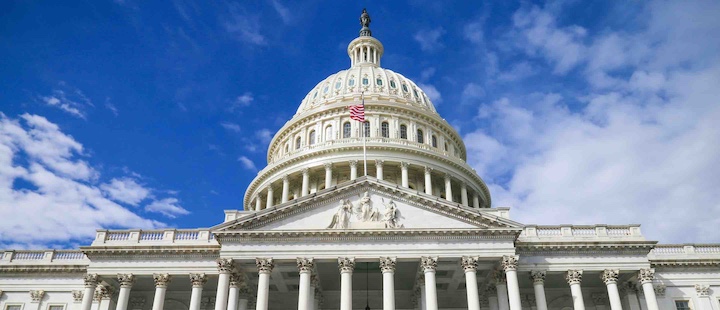Key takeaways:
- The Trump Administration announced that it is reducing the reciprocal tariff rate to a 10% baseline on the 60+ countries with higher tariff rates. The 90-day pause provides additional time for negotiations. China has not been included in the reduction and its rate is currently at 125%.
- Stock markets reacted positively to Trump’s decision to pause reciprocal tariffs for 90 days on all countries except China. It is still unclear if EU reciprocal tariff’s have also been paused.
What happened?
On Wednesday, President Trump announced his decision to put a 90-day pause on reciprocal tariffs on all countries except China. The reciprocal tariffs, which were announced a week prior, were set to take effect on April 9th and targeted a broad range of trading partners. To recap, the universal baseline tariff of 10% was set on all imports with additional partial reciprocal tariffs of varying degrees announced on 60+ countries. For example, while trading partners such as EU, Japan and India were subject to tariffs between 20 – 30%, other countries such as Vietnam and Cambodia were subject to reciprocal tariffs of upwards of 45%.
While the rest of the world catches a breather from the 90-day pause in tariffs, China remains excluded from the reprieve at this point in time as its’ reciprocal tariff rate now stands at 125% , a significant mark-up from the 34% announced during ‘Liberation Day’ on April 2nd. Over the last couple of days, the trade escalation between the U.S. and China has heightened, with China most recently hiking tariffs on U.S. goods to 84%. President Trump moved to exclude China from the exempted list of countries as China, unlike the 60+ other countries who reached out for negotiation rather than retaliate, chose to escalate with higher tariffs instead.
What does it mean for investors?
The announcement to pause reciprocal tariffs led to a remarkable surge in the U.S. stock market as investors experienced a temporary relief from the mounting global trade tensions. The strategic 90-day pause on reciprocal tariffs allows the U.S. to entertain constructive and ‘tailored’ negotiations with over 60+ countries. However, the decision to keep elevated reciprocal tariffs on China places pressure on the country to address deep-rooted trading grievances between the two trading partners.
While the decision may provide a temporary relief to U.S. businesses and their trading partners that have traditionally been more reliant on import, the question still remains on what will happen post the 90 day pause. The market is expected to tread cautiously as it is still yet to be seen what the long-term impact on underlying business costs and operations might be depending on the outcome of these negotiations. Long-term uncertainties remain abound within global trade as repercussions from the straining U.S. – China relations has the potential to disrupt global supply chains.
Both the S&P 500 and NADSAQ were trading in positive territory as markets closed at +9.52% and +12.2% respectively, a drastic reversal from the two prior days of a negative stock market close, resulting in the biggest one-day gain since 2008. On the Fixed Income front, yields moved higher across the curve with the 2-Year Treasury yield moving to 3.92% and 10-Year Treasury yield moving to 4.31%. Fed Fund Futures are currently pricing in a 73.9% probability for the Fed to deliver its next rate cut during the June FOMC meeting, a notch down from the 100% probability of a rate cut about a week prior.
The uncertainty created from the April 2nd “Liberation Day” announcement may linger in financial markets for some time to come. The markets are still trying to figure out the baseline cost of the tariffs to US in terms of slower economic growth and potentially higher prices. We expect the stock market volatility to remain elevated in the near term. For those investors who have remained on the sideline, have cash available in their portfolios and have a medium to long term investment outlook, legging into markets that are still in corrective territory presents reasonable entry points.








